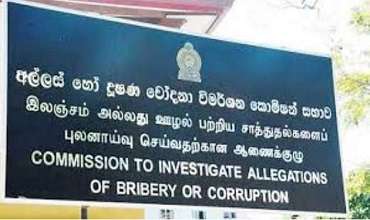Feature - KPIs in R&D Institutes in Sri Lanka: Defining Success Path for R&D Performance in Commercial Agriculture
By Prabath Chaminda Abeysiriwardana1*, and Udith Krishantha Jayasinghe-Mudalige2
What are KPIs?
Metrics and measuring tools play a pivotal role in evaluating the success of business operations. Among these tools, Key Performance Indicators (KPIs) stand out as vital metrics, derived from critical success factors pertinent to an organisation's core business. Monitoring KPIs is crucial for directing organisational strategies, as they directly influence business outcomes and impacts. However, there are concerns about the effective utilisation of KPIs by Research and Development (R&D) organisations in Sri Lanka. Doubts linger regarding whether these organisations are efficiently capturing the most significant aspects of their R&D efforts. This raises questions about the optimisation of resources and the alignment of R&D initiatives with overarching business goals. As such, there's a growing need for these organisations to reevaluate their measurement practices and ensure that KPIs accurately reflect their R&D performance, ultimately enhancing their competitiveness and innovation capabilities on a global scale.
Why are KPIs important?
KPIs may be used to gather data that show whether an organisation is growing financially or/ and non financially. Picking the right KPIs and tracking them properly can add value to the R&D business of an organisation in numerous ways.
• It gives a value to compare against current performance.
• KPIs clearly illustrate whether or not an organisation is reaching its goals.
• It facilitates setting goals, devising a strategy to reach goals, and evaluating performance along the way.
• It is a data-driven tool, therefore decisions based on it are transparent and trustworthy
• It is a robust tool that can be used even to measure personal performance and strengthen morale.
• It can be visually illustrated in many forms as it can be integrated or disintegrated on any focus area of interest.
KPI and performance management of Sri Lanka
It is worthwhile to look at a few performance management frameworks in the government organisation at the national level as well as the provincial level. Managing for Development Results (MfDR) is a management strategy for the public sector that places a significant emphasis on how a common vision, specific goals, and effective outcomes assessment may help create a better work process for an organisation. It has specifically emerged as a cornerstone of worldwide efforts around 1999, especially by the United Nations Development Programme (UNDP) to increase the efficacy of public resources and fulfill the Millennium Development Goals (MDGs).
Before 2011, the provincial planning and monitoring system paid little attention to the expected results and outcomes, instead focusing primarily on the physical and financial outputs. However, the Finance Commission (FC) of Sri Lanka established some directives in 2011 to make sure that the provinces of the country were being developed equitably. The FC began implementing the Results Based Management (RBM) framework for the provincial planning and monitoring procedures and it was expected to cover many performance areas including development efforts that are specifically emphasised by MfDR. Meantime, The UN Sustainable Development Cooperation Framework was introduced in 2022 to manage national development priorities and achieve the 2030 Agenda for Sustainable Development and its SDGs in Sri Lanka. All of these frameworks have the common goal of having budgetary and resource allocation.
Also, the effort of using KPIs as a measuring tool in those frameworks was not continuous with the same emphasis except for a few occasions as in the instances instructed by National Budget Circular No. 06 in the year 2015. Subsequently, National Budget Circular No. 06 (I) in the year 2015 issued in 2016 instructed government organisations to report the progress of KPIs in separate forms quarterly. After that, there were no such strong policy interventions in promoting the reporting of KPIs. However, the practice of KPI was maintained continuously through other means such as annual action plans of government organisations to some extent. Again in early 2023, in reaction to the Cabinet Decision on 20.02.2023, the national planning department recalled the use of ORF (organisational results framework) for each line ministry of Sri Lanka.
However, it is questionable if this core expectation of managing performance has truly been met in the long run due to the ad-hoc nature of practicing these frameworks in government organisations that include government research institutes as well. Although the functionality of the KPIs could not reach its maximum potential as a performance management tool in these instances, it has been able to hold its ground for the last few years to remain as most discussed and deliberated performance measurement tool and has valid ground to remain as potential performance management tool for coming years as well.
KPIs in R&D organizations
Research is a journey with many expectations. Along the way, it has milestones to achieve. By passing all the milestones, it has to accomplish the final goals by strategising the objectives set at the start.
Goals, objectives, milestones, and strategies ensure that the research organisation remembers why it has initiated such research and where that research aims to end. KPIs help research organisations to measure their success along the way. Setting and monitoring KPIs informs research leaders about the performance of research conducted in the organisation - where it has fallen short, where it has excelled, and what needs to improve.
In this context, R&D organisations should be cautious about using simple performance measures such as the “number of research programmes” as their key performance areas. Such performance measures may be vague in R&D core expectations as those measures may count on mere popularisation activities and simple knowledge creation which is not encouraged in current socio-economic priorities. Instead, in considering the current economic crisis where the government is practicing stringent expenditure measures and investment is staggering in R&D, an R&D organisation can use the “number of commercialised products” as an effective KPI to keep return on investment promoted for allowing the profit reinvestment.
Role of R&D woven into Organization’s Mission
When an R&D institute has a mission of providing useful research output for the national economy as well as society, its strategies are devised to find new ways of R&D efforts to acquire many commercialised products. For this, it has to measure "Unique R&D efforts that reach the commercialisation stage". Here the goal is to increase the number of R&D efforts that are converted to innovations. This will create a KPI that measures the number of commercialised products. Further, it will attract a new set of R&D efforts to be established in the organisation through organisation strategies, objectives, and targets. Additionally, this KPI may induce the organisation to create some other linked KPIs such as the “number of customers” “number of stakeholders” “number of collaborators” etc. which increase the potential of those R&D efforts. After the end of each R&D effort, the organisation would assess whether it achieved that goal or objective by analysing the collected data from those KPIs. Decision makers will then determine whether the strategies should be altered or targets to be amended to facilitate their mission that directly impacts the organisation's vision.
Set KPIs for R&D in the development of the commercial agriculture sector
The commercial agriculture sector of a developing country like Sri Lanka is at the heart of its economic growth with a contribution of approximately 7% to the GDP of the country last few years. More than 25% of the labour force depends on the success of this sector. The success of the sector depends on productivity which is largely attributed to the success of innovations that come from R&D work. To determine the right KPIs for commercial agriculture development through R&D, a research organisation may ask basic questions about its research output: What does it add to the commercial agriculture industry? What does it offer to farmers and society at large that other competitors (import industries) don’t? What are the organisation's financial goals, and how can it convince decision-makers to increase R&D investment? Research organisations may want to target their research for the sector by determining some SMART (specific, measurable, assignable/achievable, realistic, and time-based) objectives by giving much emphasis on key performance drivers such as ‘commercialisation’ and ‘research for society’. Then determine the best KPIs to evaluate them. These KPIs may be digitalised to facilitate a more robust data-driven real-time decision-making system for R&D that focuses on the commercial agriculture sector.
Therefore, in a developing country context a research organisation now becomes a business organisation, and that approach is more valid with the economic crisis faced by the country. It’s crucial to outline research values as a business to have a unique vision to measure against and to ensure research organisations are measuring the right aspects of the research performance and satisfying its customers such as farmers, society, and lastly the interest of the nation.
How KPIs assist research institutes to accomplish what society needs
In summary, most of the R&D organisations in Sri Lanka are weak in implementing an R&D strategy that has the necessary clarity, agility, and persuasion to realise national and socio-economic aspirations. In most cases, R&D efforts end up isolated from corporate priorities, disengaged from market developments, and out of sync with the speed of business. Amid a growing gap in performance between those who innovate successfully and those who do not, organisations have become incapable of establishing proper KPIs and maintaining them substantially over their R&D strategy. For example. if a research institute needs to make inventions that can be converted to innovation (marketable product or service), KPI should be set on commercialisation aspects of an R&D effort rather than knowledge creation aspects.
Currently, there's a critical oversight within R&D organisations in Sri Lanka, as they struggle to identify and uphold priorities crucial for addressing the prevailing economic crisis faced by the populace. This failure to align strategies with these R&D priorities exacerbates the socio-economic challenges faced by Sri Lankans. However, the potential solution lies in the proper utilisation of KPIs. When an organisation accurately focuses on the right KPIs, it enables every team member to grasp the R&D organisation's performance and its contribution to overall corporate success. Thus, the establishment and maintenance of KPIs are paramount, ensuring clarity of the company's vision and guiding everyone on the mission path toward achieving it. This strategic alignment not only fosters organisational cohesion but also empowers individuals to effectively contribute to the company's overarching objectives and then country's well-being.
( 1*. Ph.D. Candidate, Department of Agribusiness Management, Faculty of Agriculture and Plantation Management, Wayamba University of Sri Lanka, Makandura, Gonawila (NWP) and Deputy Director of Ministry of Education (Research and Innovation Section), Sethsiripaya Stage I, Battaramulla, Sri Lanka, abeysiriwardana@yahoo.com Tel: +94 071 8674258)
(2. Professor, Department of Agribusiness Management, Faculty of Agriculture and Plantation Management, Wayamba University of Sri Lanka, Makandura, Gonawila (NWP))
-
Still No Comments Posted.
















Leave Comments